It will never happen to you. You’re too careful. Stuff that like happens to other hunters, but never you.
When I was in my 20s, I took too many risks when it came to treestand safety. At that age, I felt self-confident, sometimes invincible, and often in denial when other hunters warned me that if I kept throwing caution to the wind and continued not wearing a safety harness or setting my stand up in precarious places, my number would come up. As one guy said, “Trust me, it happens when you least expect it.”
He was right. As I was climbing out of a hang-on stand one evening, my foot slipped off one of the screw-in style steps. Fortunately, I was already halfway down and dropped only about 10 feet. I landed square on my back, though, and suffered a couple of bruised ribs. I was lucky. It could’ve been much worse.
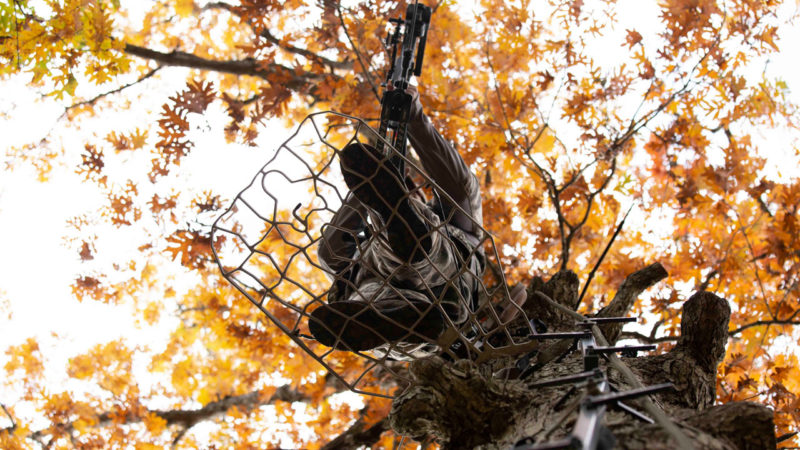
Preventing The Fall
It’s a fact of treestand hunting, and it can happen to even the most cautious hunters because, let’s face it, climbing 20 feet up a tree and sitting for hours on end on a small seat and platform is inherently dangerous. Although the equipment we’re using now is far superior in quality and safety features than those used 20 years ago, your life still comes down to the strength of a cable, chain, strap, or any of the bolts used to assemble that treestand.
Before every season, I go over all of my equipment for signs of wear and deterioration. Rusty bolts get replaced. Frayed cables get replaced. In fact, anything at all that looks suspicious gets replaced. I used to find myself saying, “this should be good for one more year,” far too often. What that usually meant was that I was too lazy to address the issue right then, and rather than take the time and err on the side of caution, I was willing to gamble that, more times than not, the equipment wouldn’t falter.
I turned 40 last fall. I’m not as much of a gambler as I used to be with this stuff. I don’t consider myself an old man…yet…but I do know I wouldn’t fair so well falling even 10 feet and landing on my back like I had years ago.
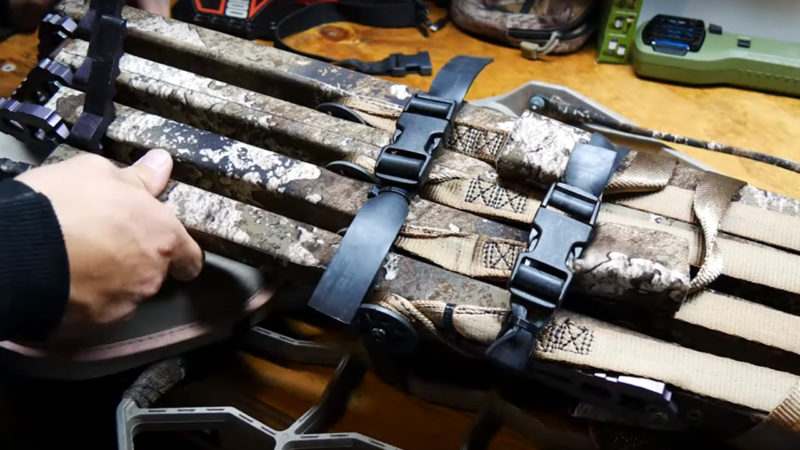
Don’t leave stands hanging year-round. It can be tempting to leave stands up in areas that you know you’ll be hunting next season, but the elements take their toll, and next year can roll into the year after that and the year after that. Truth is, you may never get around to pulling the stand and performing maintenance, so you may as well make a point to remove all stands after the season closes. It’s a pain in the butt, but necessary.
Also, I always wear a safety harness, no matter what, and always maintain a connection to the tree with a tether of some other safety device. Safety harnesses are better quality and more readily available today than they’ve ever been. Many manufacturers have strived to make them as comfortable as possible, too, so there’s no reason at all not to wear one.
Breaking the Fall
Still, accidents happen, and if you’re unlucky enough to find yourself on your way down, what can you do to increase your chances of survival?
The first thing you can do comes during the setup phase. Where you choose to place the treestand is important. I make a conscience effort to place my stands – especially the hang-ons – in clusters of trees. Not only is this good from a concealment perspective, but it also provides security. One time, the stand platform was icy and my feet went out from under me as I was stepping from the climbing sticks into the stand, but I was able to catch myself by grabbing one of the branches of a nearby tree. It was flimsy, but offered enough support to help me regain my balance.
Now, when figuring out where to hang my stand, I look for trees around the one that I want to hunt from, too. Pines, especially, can lessen the impact of a fall.
Having other trees nearby can be helpful even if you are wearing a safety harness. Once you’re off of the platform, it can be difficult getting back onto it without anything to grab on to.
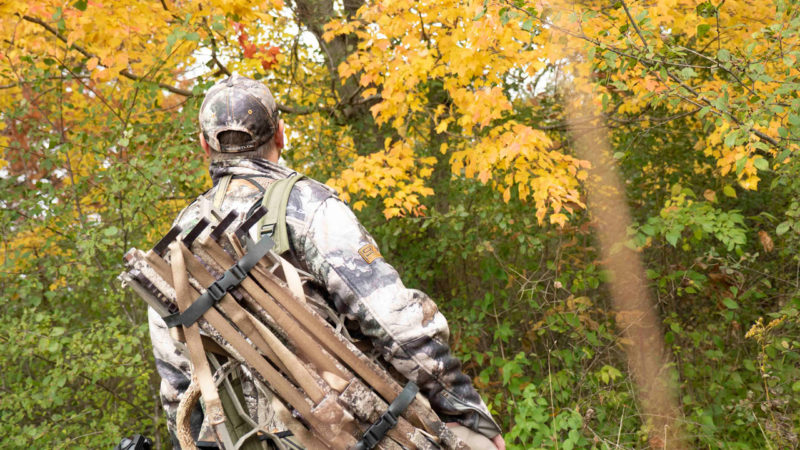
I pay attention to the ground directly underneath the stand, as well, and if there are rocks or logs that can be moved a few feet away, I move them. You can only do so much, though. I’ve hunted terrain that was all rock. But in situations where that is controllable, it doesn’t hurt to make the area a little safer, just in case.
The height of a fall can play a huge role in determining the seriousness of an injury. Consider this: A 200-pound person who drops 20 feet will fall at a rate of almost 25 miles per hour. The fall will last approximately 1.12 seconds and they will hit the ground with roughly 4,012 foot pounds of energy.
The same person falling 25 feet will hit the ground at 27 miles per hour, and in about 1.25 seconds, and produce nearly 5,000 foot pounds of energy upon impact. That extra 1,000 foot pounds of energy can do a lot of damage.
It might seem like an odd comparison, but to put it in perspective, a punch from Mike Tyson was said to produce a little over 1,000 foot pounds of energy. Theoretically, falling 25 feet would feel like being on the receiving end of a punch five times more powerful than Mike Tyson’s. Talk about a destructive force! It’s definitely something to consider when deciding how high to hang a stand.
Surviving the Fall
Worst case scenario: you fall and hit the ground. You’re seriously injured and don’t know what to do next. First, and most importantly, don’t panic. Try to stay calm and gather your thoughts. Assess the situation and address any physical damage that might require immediate attention.
Having some sort of first-aid training can mean the difference between survival and death in situations like these. Every few years I take a refresher course in first-aid. And if you know absolutely nothing about how to make a splint, tourniquet, or other procedures, even taking an online course can save your life or the basic skills to perhaps save someone else’s.
Time is precious in survival situations and it’s imperative to get help as quickly as possible. For that reason, I always carry my phone in my pocket rather than in my backpack. If I fall, chances are my backpack will still be hanging on the hook up by my stand.
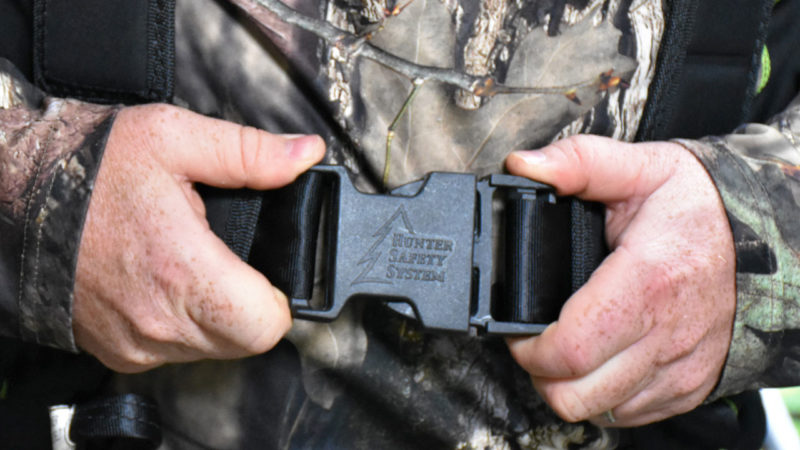
Many of today’s smart phone hunting apps allow you to share coordinates with others. Downloading that app onto a friend’s or spouse’s phone, with all of your stand locations marked as waypoints, allows them to know your precise location. Before heading into the woods, make sure they know which stand you’ll be hunting and what time they can expect you home. If you’re hunting an area with poor cell phone reception, they’ll at least know exactly where to begin looking for you.
I recently read a newspaper story of a man who broke both legs when he fell out of his treestand. He survived by eating grubs and worms and sucking moisture off of foliage. Nobody knew where he was and it took him two days to crawl to his vehicle. He survived.
A guy I once worked with fell while climbing up the screw-in steps to his hang-on stand. When he fell, the end of one of the steps pierced his flesh directly below his humerus and ripped through all the meat under the bone. A buddy had dropped him off at the stand on the four-wheeler and had driven off. Fortunately, the buddy returned when he realized he’d dropped something and found his hunting partner bleeding profusely. The guy survived and has the scars to remind him how close he was to death.
Have a Plan
Make sure to have a plan for the worst case scenario. Leave no surprises. If you know ahead of time what you’ll do when things get ugly, you’ll be well on your way to survival.
Work through all the scenarios in your mind to prepare yourself for the worst. What will you do if you have zero communication with anyone else back home, or 911? Learn to survive without your phone. Could you do it?
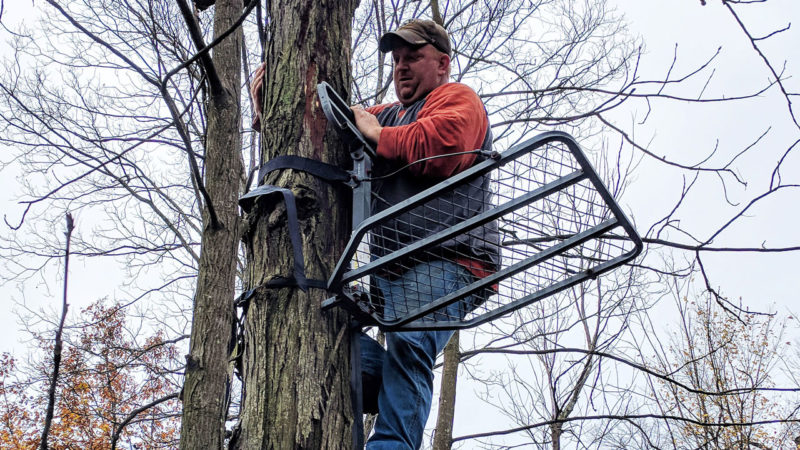
Almost every hunter knows of someone who has had a bad experience with a treestand. Every year, thousands of hunters – 4,000 in 2015 alone – fall from their stands. In fact, the number of treestand accidents seems to increase every year despite hunter numbers decreasing. Even with today’s emphasis on education and safety, nothing is foolproof or 100% reliable 100% of the time, and regardless of how cautious we are “most of the time,” there will always be those moments when we take safety for granted.
I hunt some pretty remote areas on public land, and I often wonder what would happen if I fell from my treestand. What would I do? Truth is, you never know what you’re going to do until it happens, and the actions you take immediately after the fall will play a huge role in the outcome. For people like me, who hunt miles from any access points, the best way to survive a fall is to prevent it from happening in the first place.

 By
By 



